Projects
Supporting innovative, cutting edge ideas, the Research Innovation Fund (RIF) provides seed grants for cross-college collaborative projects.
How do I apply?
Project Description
Media
Filters
- Project Types
- All
- Animal Health
- Aquaculture
- Automation and Robotics
- communities
- Communities/Farmers/Relations
- Computational Modeling
- Controlled Environment Agriculture
- Crop Production
- Dairy/Livestock Production
- Data Integration and Processing
- Farmers
- Farmers, Communities, Relationships
- Food Safety
- International Agriculture
- Iot and Networks
- Machine learning
- Machine Learning
- Plant Breeding
- relations
- Sensing Technology
- Soil
- Trustworthy AI
- Years
- Project Creators

Developing a Smart Feeding System in Fish Aquaculture Systems
Feed is one of the biggest production costs when producing fish. A large amount of the feed produced is currently wasted throughout the feeding process. This causes decreased water clarity and affects fish growth rate. During this research project, visual data will be collected along with data from several sensors, to include but not limited to, pH, dissolved oxygen, and temperature. Once data has been collected, a machine learning algorithm will be created to understand when fish should be fed. The goal of this research project is to implement a “smart” feeder within a research setting and gain valuable knowledge about which data is best to understand when fish need to be fed.
Matt Roohan (CALS); Eugene Won (CALS); Maha Haji (COE)

NMR Measurement of Underground Crops
This project will provide farmers with the ability to estimate the water content (and, consequently, dry matter content) in starchy plants like potatoes and cassava. This will better define the harvest date and allow the growth conditions of the crop to be tuned accordingly. For crop breeders, the success of a new breed can only be determined after the crop has mostly matured (nearly a year for cassava), but with dry matter content measurements throughout the lifecycle of the crop, a breeder can determine the promise of a breed much earlier, perhaps even in the first month. The project depends on how alternating magnetic fields change the orientation of proton magnetic moments in water. A prototype has been created but isn’t yielding results. By adding a second coil, we will troubleshoot and potentially redesign the setup, so we can return a stronger differential output.
Tangia Sun (CALS); Amal El-Gazaly (COE); Mike Gore (CALS)
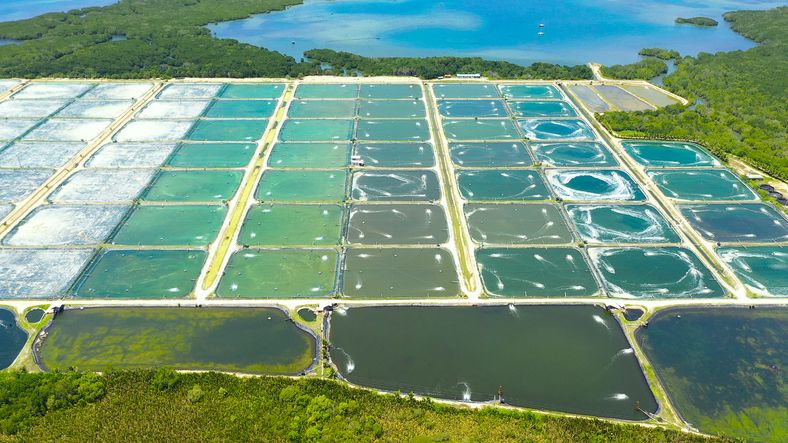
Autonomous Monitoring for Offshore Aquaculture
Aquaculture – with its ability to produce high-quality protein with no need for land, freshwater, or fertilizer – will be key to ensuring adequate food supplies for the world’s growing population. Competition for near-shore space, episodes of poor water quality, and environmental considerations have motivated farmers to shift towards less accessible, more cost prohibitive open ocean farming. Autonomous monitoring can be an effective means of reducing these barriers. Advancements in sensor technologies have allowed for the expansion of remote monitoring in offshore aquaculture farms for water quality and fish behavior. A key requirement of automated offshore monitoring, however, is the transmission of data back to shore. The objective of this research is to design and test an autonomous monitoring system for aquaculture farms that constantly monitors water quality and relays real-time data back to shore via satellite.
Isabel Mejia-Roberts (UG-COE); Maha Haji (COE); Eugene Won (CALS)
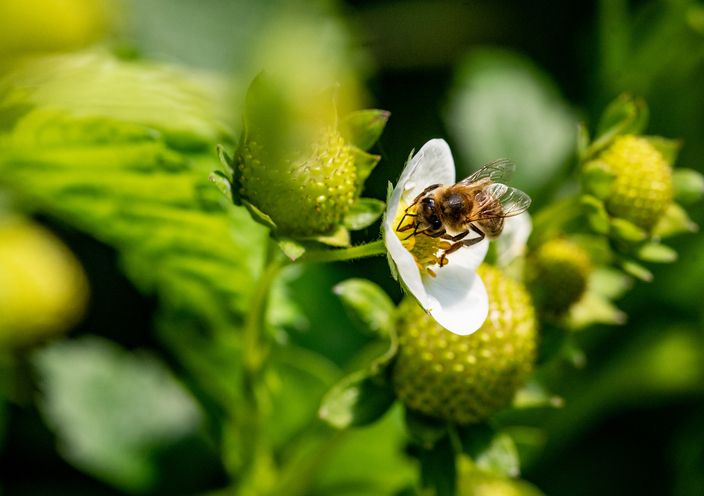
Automated Monitoring of Strawberry Pollination
The world’s food security is highly dependent on pollinators with bees being primary members of that community. Bees are declining at an alarming rate due to several factors including use of pesticides and disease. This decline has made pollination via drone an appealing alternative. Initial studies on drones’ effectiveness to pollinate strawberry plants has proved inconclusive. This work helps develop additional field experiments to validate current data as well as how this data can be employed in an open-source format. Using automated entrance monitors, solar-powered acoustic sensors, and computer programs that use the size, symmetry, and color of the strawberries to create models. The technology developed for this study can help pollinator focused researchers in the future as they explore methods for monitoring the entrance of a hive, understanding the consequences of pollinator interactions with strawberry plants, and the use of acoustic monitors in a field to measure the presence of wild bees as well as other pollinators.
Tallisker Weiss (UG-CALS); Kirstin Petersen (COE); Scott McArt (CALS)
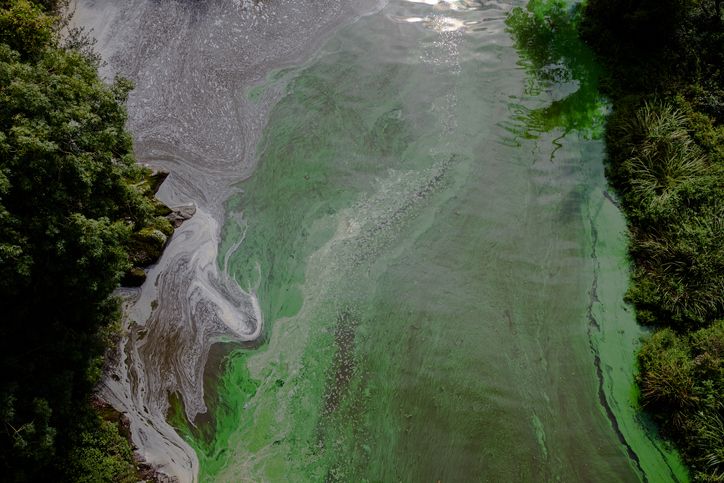
Using Real-Time Control and Internet of Things Capabilities to Improve On-Farm Denitrifying Bioreactor Performance
Agricultural systems need to increase food production to feed a growing population while mitigating the negative impacts of nitrogen fertilizers on water and climate. Nitrogen runoff from agriculture can cause groundwater to have excess nitrogen which can increase greenhouse gas emissions, damages to the ozone layer, acidification of soils and water bodies, and dead zones in coastal areas and estuaries. The goal of this project is to help develop accessible and easily implementable technology using an autonomous woodchip bioreactor and Internet of Things (IoT) to help enable farmers to limit the export of nitrogen to groundwater and surface water ecosystems through real-time data and feedback and help prevent excess nitrogen pollution.
Sofia Echavarria (UG-CALS); Matt Reid (COE); Scott Steinschneider (CALS)
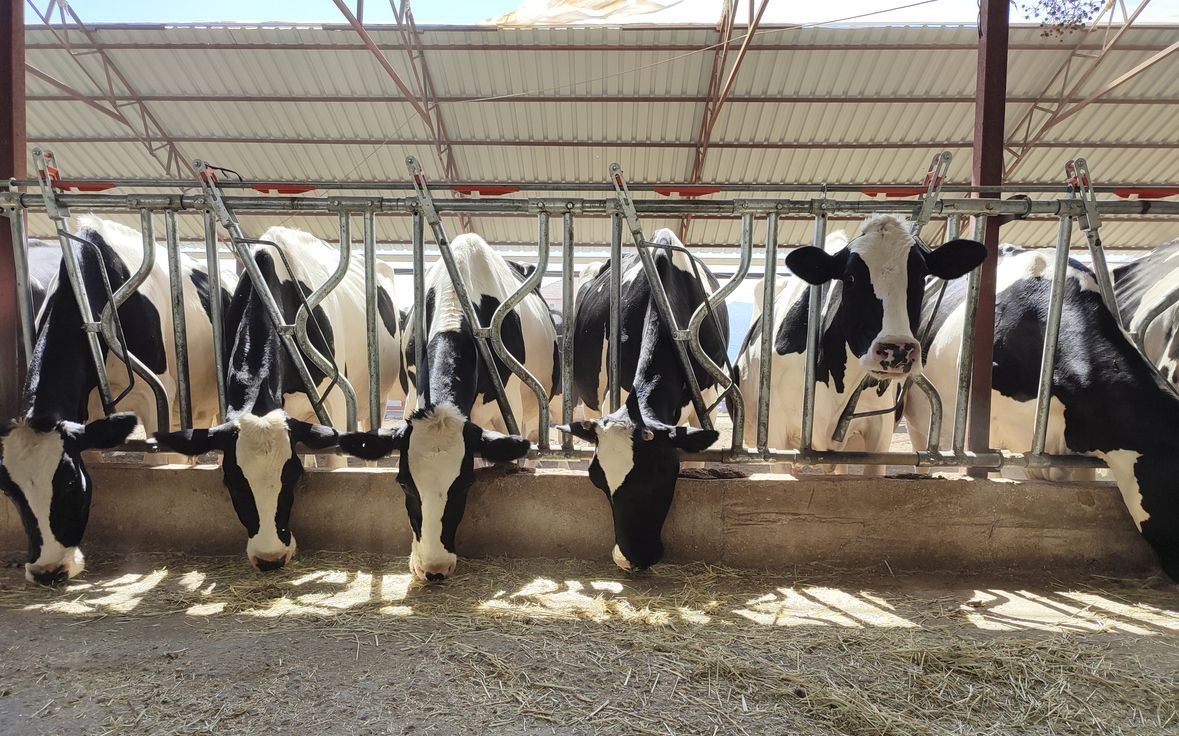
What Can Rumination Time Tell Us About the Blood Calcium Status of Early Lactation Dairy Cattle?
Subclinical hypocalcemia (SCH) affects over 40% of multiparous dairy cows in early lactation. Arising from a drop in blood calcium (Ca) after calving due to the increased demand for Ca to support lactation. Delayed or prolonged episodes of SCH are associated with decreased production and feed intake, increased risk of additional diseases, and herd removal. Previous reports have shown that daily rumination time (RT) is positively correlated with blood Ca in the early lactation period. As many farms have already implemented sensors to track RT of cows, the results of our study can be incorporated into the preexisting software as an alarm, providing a practical method of identifying cows experiencing delayed or prolonged SCH. By identifying these cows either before or as they are experiencing reductions in blood Ca, more targeted treatment and management strategies can be implemented to reduce the risk of additional disease development, thus improving cow health and productivity as well as farm profitability.
Claira Seely (CVM); Jessica McArt (CVM); Julio Giordano (CALS)

Exploring Options for Nutrient and Energy Recovery from Aqueous Phase of HTL – a Techno-Economic Analysis
Hydrothermal Liquefaction (HTL) is a strong candidate for dealing with wastes, including those from agriculture (e.g. chicken/ cattle manure, food waste, and other lignocellulosic biomass feedstocks) by separating waste into various reusable components. A hinderance for separation on a larger scale is fouling that can occur early in the HTL process. In this research we plan to explore pretreatment options as a step to nanofiltration via membrane separation and related processes. To this end we will explore the option of wet air oxidation in relation to existing technologies that employ activated carbon filtration. Wet air oxidation may allow for the capture of additional nutrients and energy during the aqueous phase (AP) enhancing the sustainability and the development of products of additional value and marketability from HTL of agricultural waste.
Kalash Pai (CALS); Jefferson Tester (COE); Xingen Li (CALS)
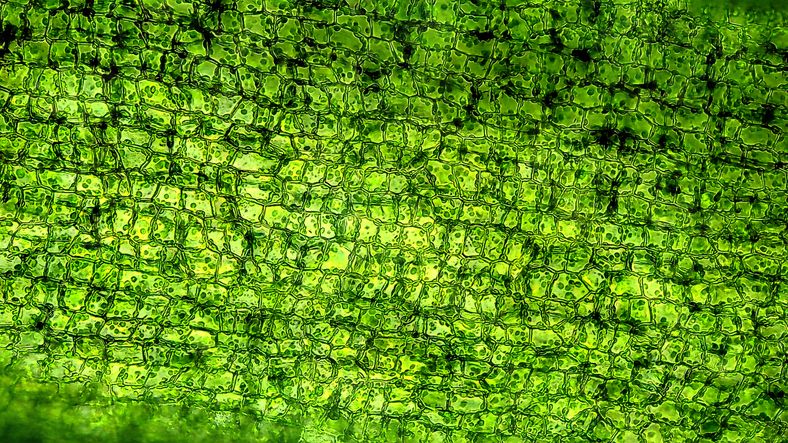
Genetically Encoded Biosensors for Plant Water Stress
Creating digital interfaces that allow plants to communicate their needs to humans and automated control systems has the potential to revolutionize agriculture. A system of sensors that can provide a dynamic readout of plant metabolic needs and state of stress is a necessary and currently missing component of this interface. Towards this end, we propose to develop genetically encoded biosensors that provide insight into plant cell stress, including stress related to water deficiency. The proposed sensors are based on a successful design that has been developed for quantifying macromolecular crowding in mammalian cells using FRET (Forster resonance energy transfer) while accounting for spectral interference from the chlorophyll. By overcoming this challenge, we hope this work will help develop sentinel “stress sensor plants” in crop fields can provide a real-time readout of water stress for precise and intelligent irrigation.
Ling-ting Huang (COE); Matt Paszek (COE); Adrienne Roeder (CALS)
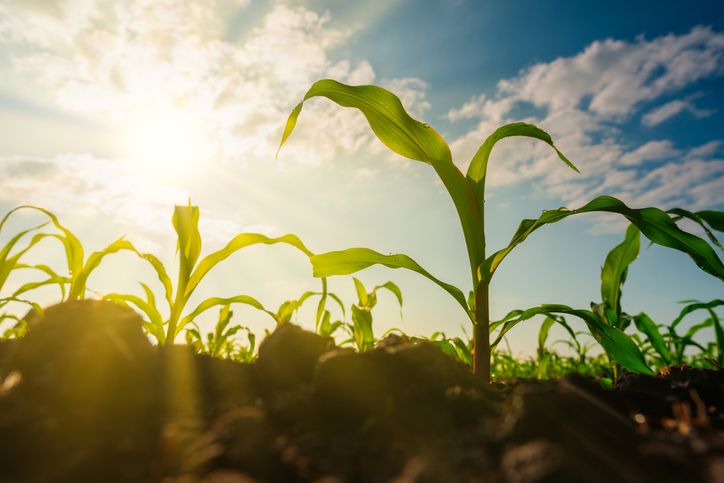
Multi-sensor Crop Monitoring Platform
This project intends to build a ground-based crop monitoring platform that can analyze crop physiology and canopy characteristics by collecting data during the growing season of maize. Several sensing technologies including a line sensor, an RGB camera, and a lidar will be equipped to the platform to help collect crop physiology data at a high frequency. This platform will be deployed on a maize field of the campus farm where researchers can obtain accurate trends of the maize growth. Currently, the platform works well in a laboratory environment but faces issues in the field due to the effect of the bright sunlight on the ability of sensors to measure crop height at high throughput. The goal is to debug and improve the existing line sensing sensor so that it works on real farms with robustness. If time permits, an automated movement, and navigation system can be added to the platform. This allows the platform to travel straight along a row of maize while collecting data on its own.
Chenxi Qian (GR-COE); Louis Longchamps (CALS); Joseph Skovira (COE)

Multi-sensor Crop Monitoring Platform
This project intends to build a ground-based crop monitoring platform that can analyze crop physiology and canopy characteristics by collecting data during the growing season of maize. Several sensing technologies including a line sensor, an RGB camera, and a lidar will be equipped to the platform to help collect crop physiology data at a high frequency. This platform will be deployed on a maize field of the campus farm where researchers can obtain accurate trends of the maize growth. Currently, the platform works well in a laboratory environment but faces issues in the field due to the effect of the bright sunlight on the ability of sensors to measure crop height at high throughput. The goal is to debug and improve the existing line sensing sensor so that it works on real farms with robustness. If time permits, an automated movement, and navigation system can be added to the platform. This allows the platform to travel straight along a row of maize while collecting data on its own.
Chenxi Qian (GR-COE); Louis Longchamps (CALS); Joseph Skovira (COE)

Engineering Real Weather Wind Tunnel for Experimental Agriculture at Field Scale
Corn earworm (CEW) is an annual pest of NY sweet corn crop. NY is one of the largest producers of sweet corn with a production value of $37 million. Monitoring is the best defense against CEW, helping growers determine the insecticide application timing. Current monitoring practice relies on trapping using a pheromone lure. However, the connection between trap catches and in-field counts is imperfect. To make the correlation stronger, we need a better understanding of how pheromone spreads in the cornfield under realistic environmental conditions and how CEW responds to the pheromone. This summer we will specifically focus on understanding how wind condition changes the pheromone distribution by building a wind tunnel array and measuring the pheromone’s spread. This will provide a valuable pesticide usage guideline for growers, allowing for well-timed use of pesticides informed by improved CEW monitoring, which can reduce yield loss and limit the unnecessary application of pesticides, thereby benefiting both the growers and our environment.
Jena Shields (GR-COE); Chris Roe (COE); Jennifer Thaler (CALS)
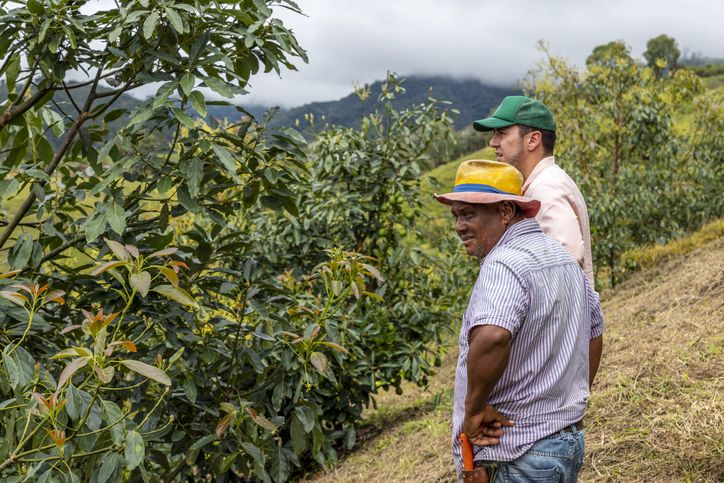
Emerging Digital Phenotyping Technologies in Colombia and Prospects for Social Impact
The goal for this project is to conduct interdisciplinary research to learn about the values that inform digital phenotyping technology development and the actors that are likely to benefit through examining a case study of plant breeders at the Alliance of Bioversity International and the International Center for Tropical Agriculture (CIAT) in Colombia. The Alliance is part of the Consultative Group for International Agricultural Research (CGIAR) and continues to play an important role in promoting Green Revolution technologies across the Global South. Digital phenotyping technologies are increasingly used to generate specific information on crops to aid plant breeders in finding and developing optimal varieties. Nevertheless, research suggests that the increased adoption of high-yielding, hybrid seeds during the Green Revolution concurred with the standardization of farms and the promotion of industrial monocultures.
Lara Roeven (GR-CALS); Steven Wolf (CALS); Phoebe Sengers (CIS/CAS)

A Social Network for Dairy Cattle
The analysis of animals’ behavior is an essential part for understanding their state of health, in many senses. A body condition score (BCS) can be used as a part of such analysis: such a score is based on estimates of fat on the animals’ upper hind quarters, coat condition, visibility of bone structure, and other indicators. When coupled with other metrics, such as biometric data, milk quantity and quality data, etc, we arrive at a data set that can be used as an input for predicting reproductive performance and productivity, and even effectiveness of nutrition, heat stress, and other health factors. Images / video footage of dairy cattle can serve as input in the task of classifying the health situation of that individual. More specifically, by extracting features from pixels, a deep learning model can learn the underlying correlation between the input pictures and the overall BCS of those cattle. These results would then be utilized for constructing a network of social networks of cattle. This social network can visualize all important indicators for the health of the individual cattle and the herd and become a powerful tool for the animal experts and digital farms.
Tiancheng Yuan (GR-COE); Ken Birman (CIS); Julio Giordano (CALS)
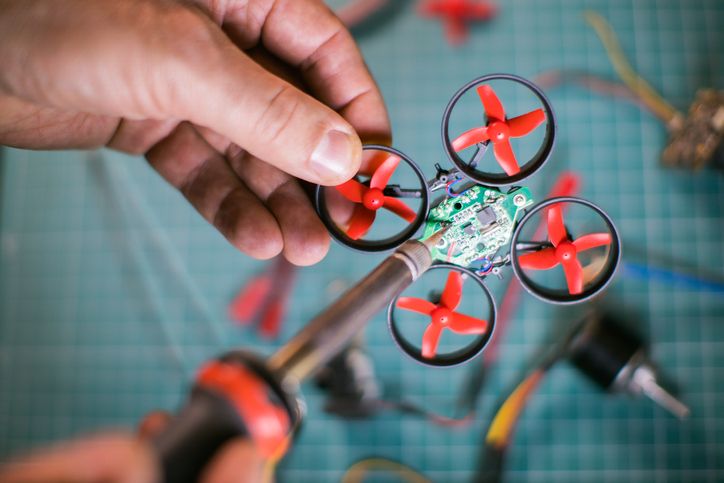
Berry Construction
Tackling high throughput plant phenotyping, the Berry Construction project aims to bridge the quality advantages of structured laboratory 3D reconstruction and the scalability of outdoor, small-scene reconstruction with a scalable, low-cost 3D scanner. While fluoroscopy analysis from 2D images has garnered much success in plant phenotyping, such analysis in 3D is largely unexplored. In 3D reconstruction, plants pose as challenging subjects from which extracting high quality geometries and textures is difficult. Using an ensemble of cheap cameras like Pi v2 cameras to synchronously capture images, we aim to overcome reconstruction artifacts like phantom limbs and lighting inconsistencies commonly found in-field methods. In the long run, we plan to deploy a fully active perception phenotyping system through a swarm of microdrones which we hope will substantially reduce the total pesticide residuals which can have negative effects on the environment and biodiversity
Jonathan Moon (GR-CALS); Yu Jiang (CALS); Tapo Bhattacharjee (CIS)
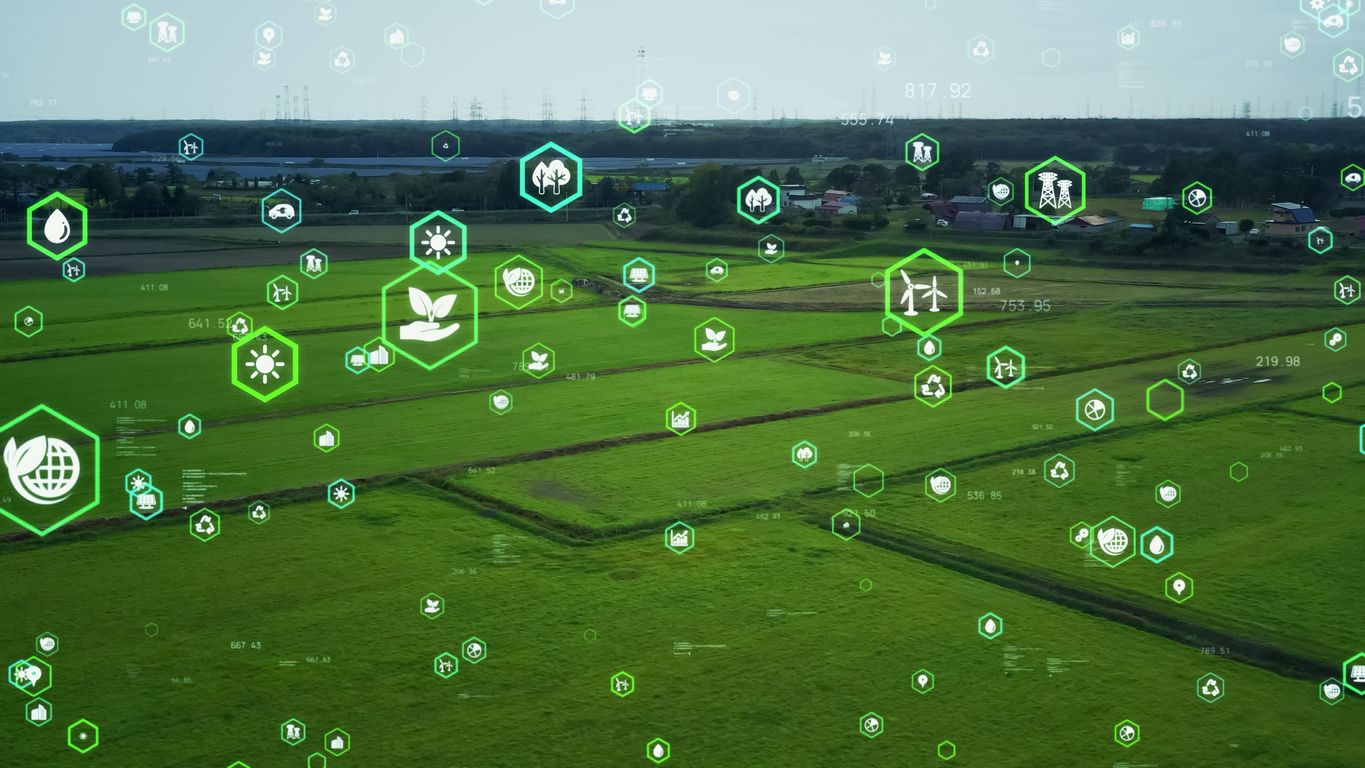
Expanding design of agricultural IoT to address practices beyond production (planning grant)
The proposed work explores ways to expand the design space of “Internet of Things” (IoT) agricultural technology by cross-informing work in social studies of agricultural technology with cutting-edge design research. Most digital agriculture aims to improve the productivity, profitability, and/or predictability of farming while reducing environmental costs. In this project, we propose to expand the range of agricultural IoT design by focusing attention on what we term “practices beyond production.” Recognizing that farms are not simply sites of rational food production, our work explores the potential for the design of agricultural IoT systems to address non-economic issues such as vocational and family values of farmers, human-animal-plant relations and care relationships, and farms’ participation within their rural communities.
Phoebe Sengers (CIS), Lee Humphreys (CALS)
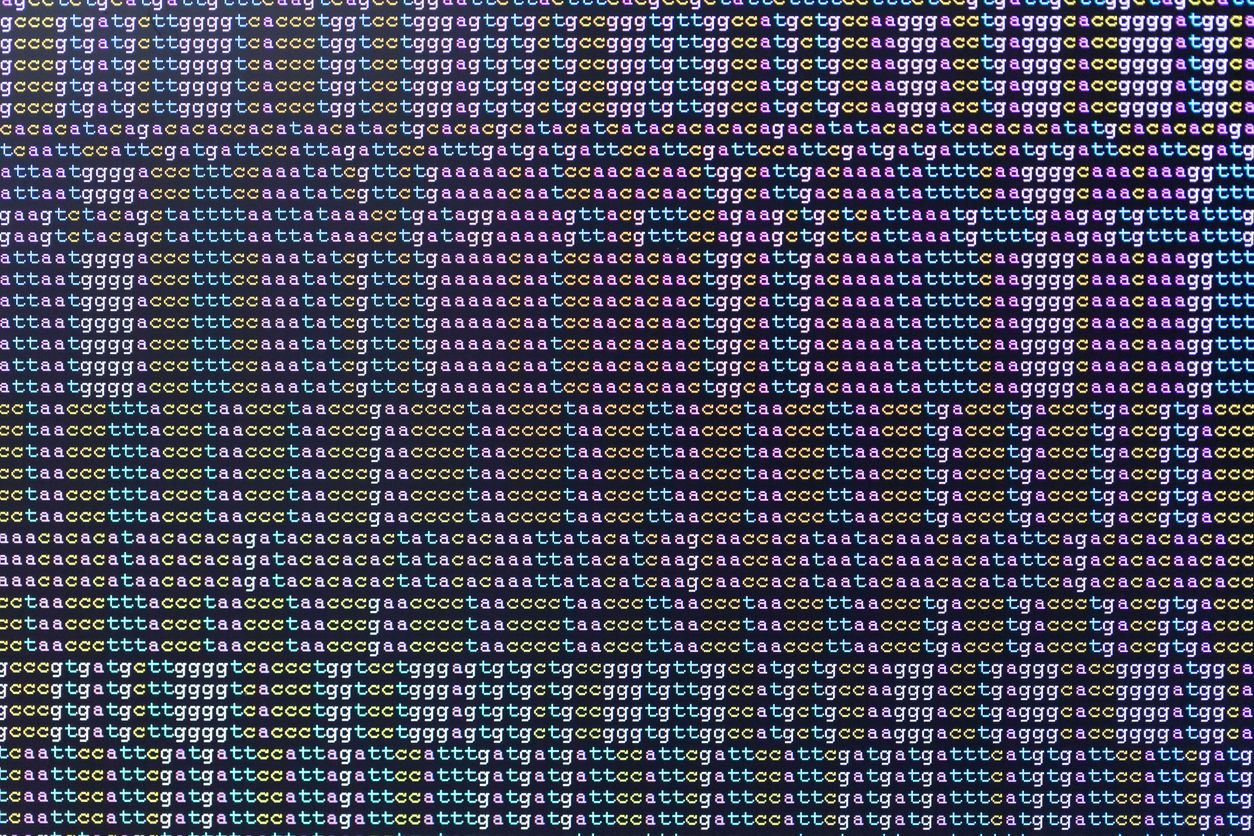
Accurate and Affordable Genotype Imputation for Plant Breeding Based on Machine Learning
Advances in technology are enabling the collection of vast amounts of genetic and phenotypic plant data. This data can help explain the genetics of traits important in agriculture and contribute to the development of sustainable food systems. The long-term vision underlying this project is to understand how genetics and the environment determine phenotypes important in agriculture and use this knowledge to develop methods and protocols for improved plant breeding. Central to this effort will be the development of techniques and frameworks in machine learning that enable modeling complex genetic datasets. If successful, these efforts will enable breeding crops that are more nutritious, require less water and fertilizer, and resist disease, ultimately improving human and environmental health.
Volodymyr Kuleshov (CIS), Jaehee Kim (CALS), Kelly Robbins (CALS), Edward Buckler (USDA)
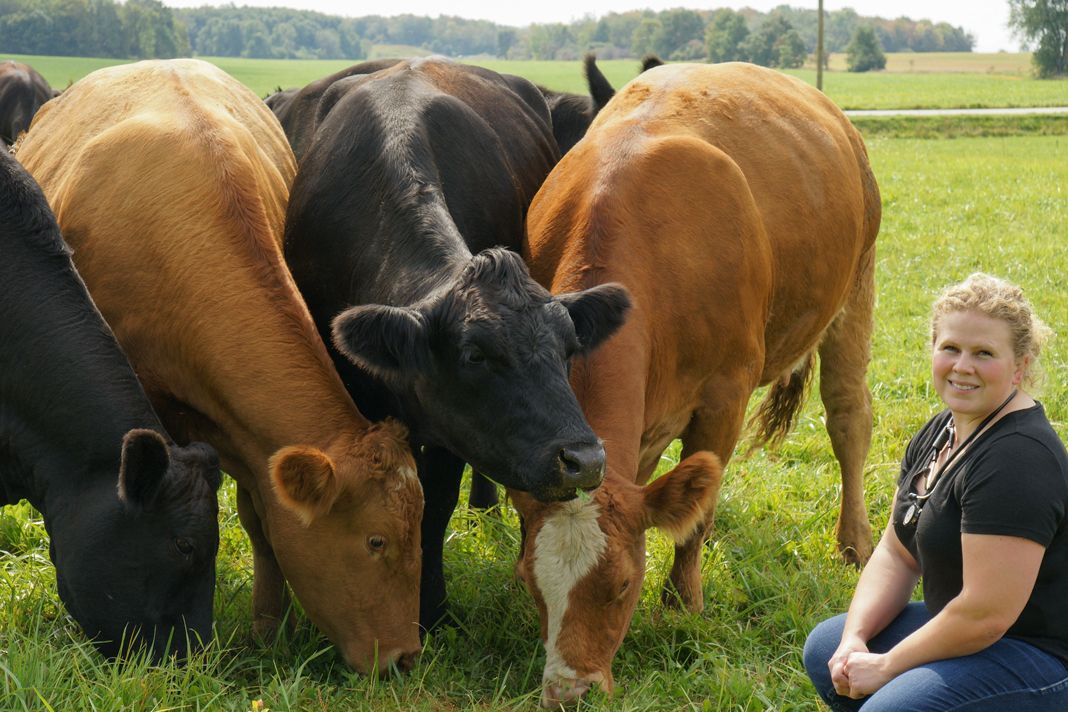
Design and development of a multimodal sensing technology to characterize and quantify changes in suckle behavior in dairy breed calves that experience pre-weaning morbidity events
There is growing interest in the use precision technologies for dairy calf management. However, there are currently few sensors commercially available and validated for use in this population. The objective of this project will be to develop novel and rugged multimodal sensors for integration with automated milk feeding stations; to measure and characterize suckle behavior including pressure sensing (pattern, duration, speed), oral contact temperature (at the point of maximum contact on the palate), and vibrations (created while breathing during suckling) in healthy and diseased pre-weaned dairy breed calves; and, to determine associations of changes in these parameters with morbidity and mortality outcomes in dairy breed calves prior to weaning. The ability to detect subtle physiological and behavioral derangement in group housed calves fed by automated milk feeders will improve early disease detection in dairy calves, inform decisions on disease intervention, monitor recovery, and improve overall calf health and welfare.
Taika von Konigslow (CVM); Tapomayukh Bhattacharjee (CIS)

Optimized pathogen environmental monitoring program in food processing facilities through reinforcement learning and privatized federated learning algorithms
The key challenges in pathogen environmental monitoring programs stem from the high cost in testing and experimentation, the high risk in contamination and outbreak, and the reluctance of individual facilities to share data due to privacy and liability concerns. This project uses Listeria monocytogenes contamination in food processing facilities as a model to develop new digital-twin models augmented with privacy-guaranteed machine learning solutions for food safety assessment. This proposed integrative framework will provide optimized allocation of testing resources, risk-averse prediction of effective corrective measures, and privacy guarantees to incentivize data sharing among stakeholders and be used as a model for future food safety systems.
Renata Ivanek (CVM), Martin Wiedmann (CALS); Jayadev Acharya (COE), Qing Zhao (COE)
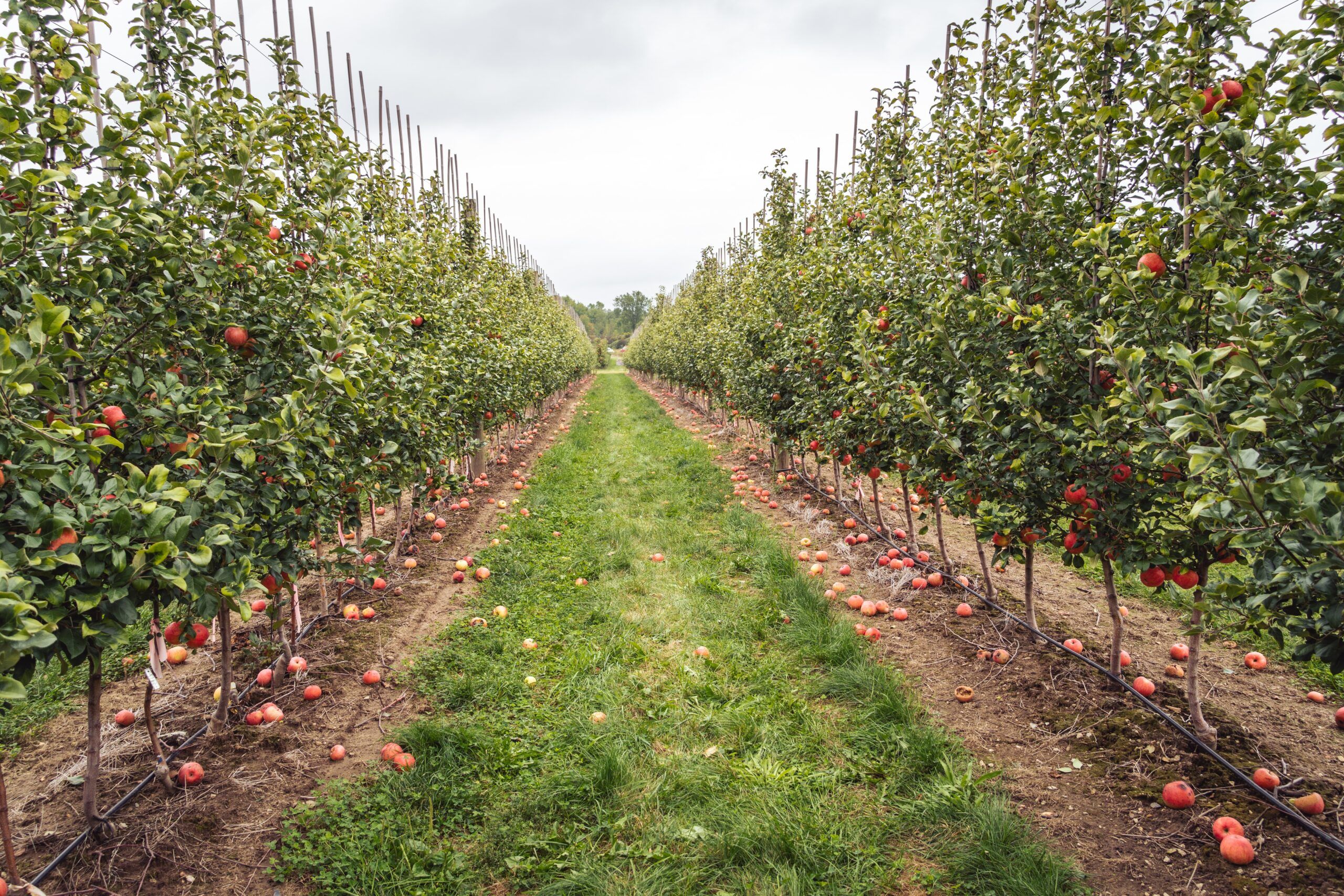
Quantifying 3D vegetative growth and light environment for orchard trees with terrestrial lidar and computational modeling
In orchard plantation systems, vegetative growth is a critical plant ecophysiological process that regulates tree architecture, carbon sequestration, and production of tree crops. Tree carbon allocation and growth patterns are determined by both genetic differences and tissue-level micro-environment. However, accurate and cost-effective quantification of tree vegetative growth has been challenging, especially at fine spatial scales (e.g. branch-level). In this project, we propose to use portable terrestrial laser scanning (TLS) to track fine-scale 3D changes in leaf area and woody volume for several cultivars of apple trees. The project will generate public and accessible workflow and software to quantify 3D tree architecture and vegetative growth and enhance our quantitative and predictive understanding of plant carbon allocation, which can guide sustainable management (e.g., pruning and optimizing carbon sequestration) for tree plantations and forests.
Xiangtao Xu (CALS); Steven Marschner (CIS)
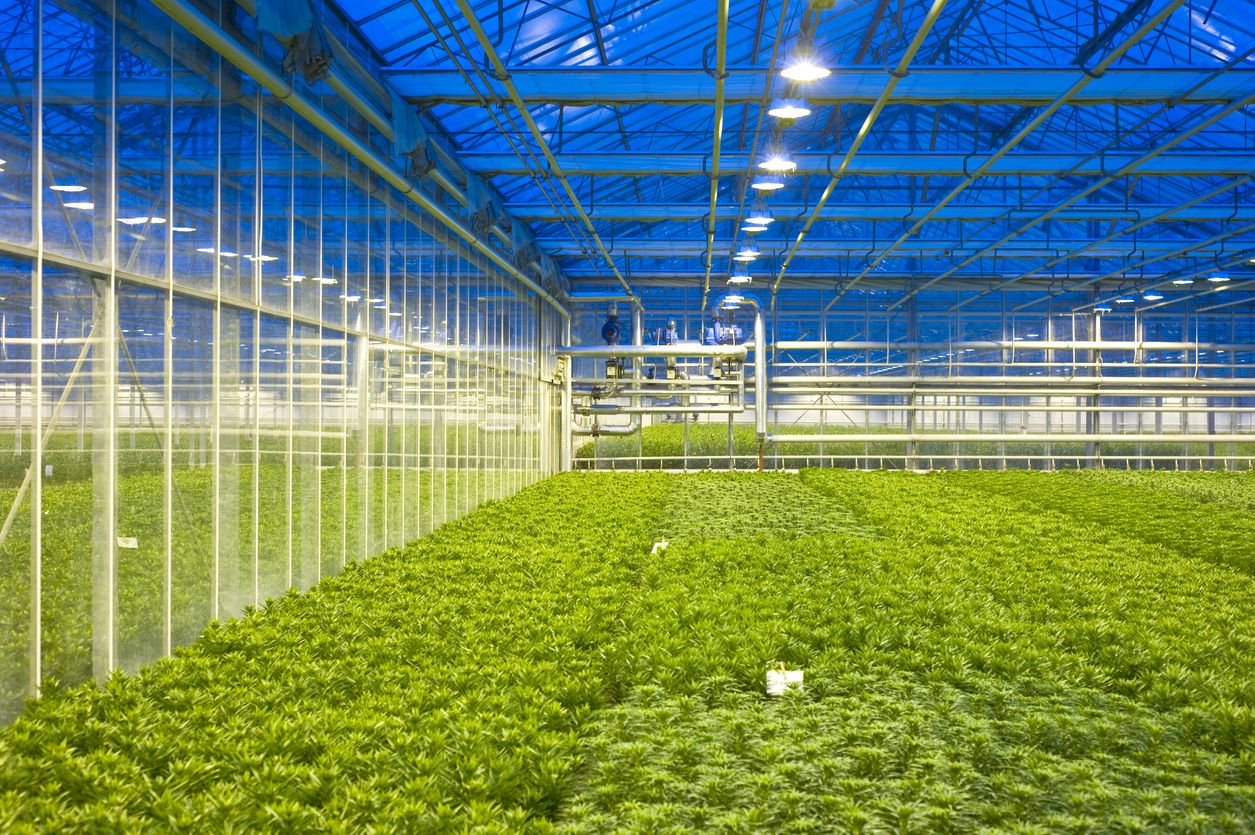
Advancing Autonomous Greenhouse Technology with AI for Sustainable Food and Plant Production in Controlled Environment Agriculture
Controlled environmental agriculture (CEA) is a technology-based approach to sustainable food production using facilities like semi-closed greenhouses and exhibits advantages in terms of a potential higher productivity and quality, as well as robustness to external climatic conditions. CEA has been considered as a popular approach to food production at locations with harsh climate condition, in Space Farming and Urban Agriculture, and for the emerging portable plant factories within shipping containers. While the availability of skilled growers capable of managing high-tech greenhouses remains scarce, the increasing adoption of advanced Digital Tools enables the development of automatic and efficient operations in high-tech greenhouses to further improve the productivity and reduce the cost. This project aims to address technological challenges by integrating artificial intelligence (AI), sensing, mobile robots, and Internet of Things (IoT) tools and methods to develop a state-of-the-art digital platform for autonomous greenhouse to address an emerging and important problem that has the potential of paving the way of future farming practices that could be resilient to the climate, location, and space constraints.
Fengqi You (COE); Neil Matteson (CALS); Yu Jiang (CALS)
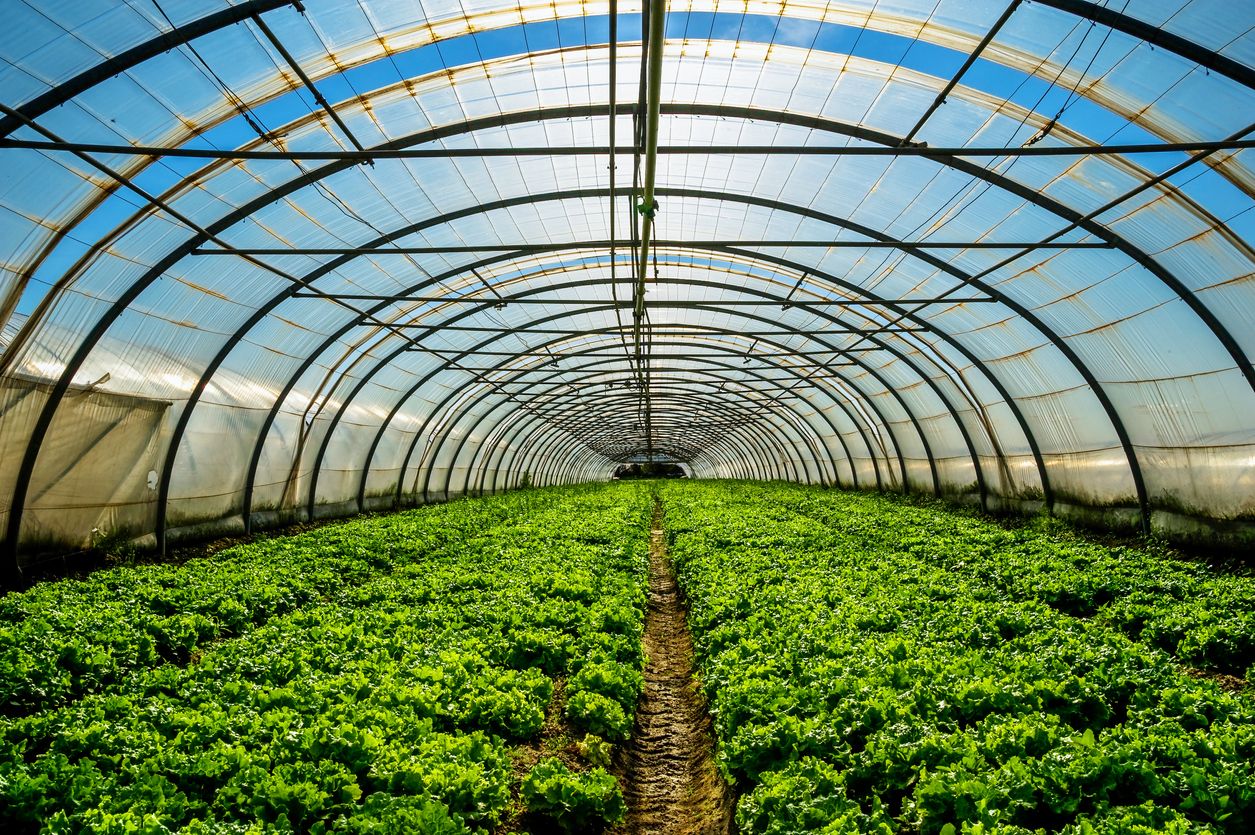
Advancing Autonomous Greenhouse Technology with AI for Sustainable Food and Plant Production in Controlled Environment Agriculture
Controlled environmental agriculture (CEA) is a technology-based approach to sustainable food production using facilities like semi-closed greenhouses and exhibits advantages in terms of a potential higher productivity and quality, as well as robustness to external climatic conditions. CEA has been considered as a popular approach to food production at locations with harsh climate condition, in Space Farming and Urban Agriculture, and for the emerging portable plant factories within shipping containers. While the availability of skilled growers capable of managing high-tech greenhouses remains scarce, the increasing adoption of advanced Digital Tools enables the development of automatic and efficient operations in high-tech greenhouses to further improve the productivity and reduce the cost. This project aims to address technological challenges by integrating artificial intelligence (AI), sensing, mobile robots, and Internet of Things (IoT) tools and methods to develop a state-of-the-art digital platform for autonomous greenhouse to address an emerging and important problem that has the potential of paving the way of future farming practices that could be resilient to the climate, location, and space constraints.
Fengqi You (COE); Neil Matteson (CALS); Yu Jiang (CALS)
Become a Fellow
Stay up to Date
If you have a disability and are having trouble accessing information on this website or need materials in an alternate format, contact [email protected] for assistance.
CIDA Copyright 2023 | CIDA is an equal opportunity employer | Terms of Use | Privacy Policy